“Iceberg dead ahead!” is not one of the harbingers of disaster in the Andaman Sea. But with a grating sound a new untethered 5hp outboard slipped over the back of Sadé the third of the School’s boats in which I have made my home. Before it was completely immersed the instructor, an ex-shepherd and dairy farmer, grabbed it and hauled it into the dinghy where he had been waiting for me to pass it to him so that we could go ashore for dinner at a wild Thai beach full of music and frying fish. Like all the instructors in this school he is a first rate seaman, ready for any unforeseen circumstance to arise and willing to take the necessary prompt and effective action to counteract it.
We eventually emerged from Telaga Harbour on Lankawi rather later than expected at the start of our voyage into Thai waters. The harbour master had taken an unexpected extra day’s holiday so that a visit to the main town of Kuah was necessary to obtain our clearance papers from Malaysia.
Here is the sunset on that glorious day, complete with fishing vessel, taken a short time before the first landfall in this new country, that I had not visited since 1959.
We nonetheless arrived in time for dinner at Ko Lipei, a beach development for hippies with restaurants cooking freshly-caught fish crammed side by side and backed by sandy paths leading to a zone with public lighting but still no made-up roads. The vigour, noise, chaos, and youthful European inhabitants (gap year students and professional bums) was indescribable. Here is a bar made from a retired fishing boat, which somehow summed up the experience.
By this time in the evening the incident with the outboard was long forgotten, especially after coughing and wheezing a bit, the Yamaha started and ran steadily! Excellent engineering – I have had to strip down my old Tomas when it was dunked in salt water.
During the night the anchor dragged. The instructor awoke as he felt a change in ship’s motion. The temporary trainee skipper, my colleague Eric awoke because he had heard the GPS anchor alarm beeping. It had move 0.004 nautical miles, it said. I awoke when they started the engine to operate the capstan to raise the anchor as we set off on another leg of our voyage, this time to a tiny native village where coconuts were being cultivated and where the enterprising owner of the largest house had started a restaurant on the bare earth and built a few cabins for passing hippies. We moored to a government buoy – marked on the chart – and made the short journey ashore using the RIB and the surviving engine, which now worked again after a bit of white smoke protest and grumbling.
As I stepped ashore on this scrap of land called Ko Kra Dan I noticed a hippy working hard at pulling a cord to rock himself in a hammock set up between the two most seaward trees that grew, or were planted along that wild strand behind which the simple huts were crouched. This is the view from my seat next to the cold box from which you had to help yourself to beers, showing the tin to the smiling proprietor.
Here is a neat native house which contains all that is needed by its inhabitants for life and death.
And here is a coconut waiting to be planted to make a new source of food, ropes, building materials, clothing, etc.
We prepared to set off from this idyllic spot on a perfect morning on which very light sea breeze was just picking up after the calm at the end of the night. This was onshore at angle of about 45 degrees. The sea was very quiet, just gently rocking, and this was fortunate for it saved the ship from more serious damage.
The instructor decided that one of the aspiring Coastal Skipper trainees should sail off the moorings. There was a good depth of water under the keel, 11 metres, I think. However to take a benefit from the onshore aspect of the breeze, it would be necessary to set the sails smartly, otherwise we would just tend to drift back from the moorings onto the shore at a slanting angle, and this is what we did in fact do when I smartly obeyed the order to release the bridle from the mooring loop. There were a couple of minutes during which the trainee could have saved the situation, but alas we were standing into greater danger than the instructor foresaw, as the boat gently grounded on bomis, horrible cauliflower-like rocks which poke up just downwind and inshore of the mooring, to catch the unwary.
The sound of going aground, hollow and grating, definite and harsh, strikes through the spinal chord, affects the heart, stops the liver in its function, and encourages the kidneys to an overtime rate as sudden as it is unwanted.
“God Christ, we’re aground!” I blasphemed unnecessarily. God Christ I wish I could keep my bloody mouth shut. Gift of the gab? I should have been born a dour and wordless Scot. But, by the blood of Christ, it was not a time for him to listen to me, and he was shocked out of his normal calm into invoking not God, not his suffering son, but the act of generation itself, in the fine old anglo-saxon mode.
“F F F F” he groaned, moaned, and ejaculated (as used to be said before the word raised a snigger, as perhaps it does now). The worst things we do are of course those we do to to ourselves. He jumped to the throttle and set the gear into reverse, full throttle, securely grounding the propeller against the innocent round head of the bomi (I understand this to be an Australian term for a coral head). The shattering grind of this second assault was more than flesh could bear.
He leaped into the dinghy, and tried to push us off, but the bows and stern just turned against one another, as the tide fell and she bedded in gently grinding away at the heavy iron keel and the stout fibreglass of the rudder.
“Stream out an anchor?” I roared, but he had already anticipated this, and with icy calm ordered us to release the anchor into the rubber dinghy, its chain following down between his legs. Taking as much chain as his little boat would carry, powered by that faithful Yamaha (which we had so nearly lost), he streamed out the anchor as far as he could. On the way he began to think about recovering the mooring, so he turned towards it, thinking, I suppose, that the best way to get us off was to retrace our course over the rocks. When he had reached the most outward point that the dinghy could transport the weight of anchor and chain he dropped it to the bottom and I winched it in on the powered capstan. The bows turned back half to face the moorings we had left such a short time before. But we did not come off, that terrible grinding enough to frail Macbeth as when his eyes saw Birnam Wood coming to Dunsinane.
Our doughty skipper was of the same mould although far less murderous. At least he would die, thought I, with harness on his back. With a stuttering groan the capstan slowed and halted, its strong electric motor overloaded. The bows had turned but we were still fast aground. Out intrepid skipper now had us join two mooring warps together with bowline loops and mounting one end in the main sheet winch, he raced back to the mooring with the other end and secured it to the loop we had left in safety a few minutes before. Now we tried to wind in the warp, through the bow fairlead. We gained a bit, then stuck again. We tried again and this time, grudgingly and with a last shattering grind, she came off and I was able to raise the anchor and we were able to recover the mooring, after passing the join in the the warps through the fairlead.
Once we were back on the mooring I volunteered to swim under the boat to inspect the damage. Through misting goggles I could clearly see the unchanged bulk of the keel, the striations in the rudder and that all three propeller blades were still attached. I woggled the rudder to check that it was still attached to the wheel and it felt firm and strong. i returned breathless to the surface and clambered back onboard.
Now we set off again, slipping the moorings a second time. This time we relied on engine power and soon cleared the land. As we increased the revs it was Mr Brash who first drew our attention to a strong vibration although I daresay the skipper felt it also. Above 3.5 knots the prop was vibrating and the vibration increased alarmingly as the revs were increased. The whole binnacle assembly with its integrated wheel and the stern of the boat were shaking as a dog shakes a rat.
Saying goodbye to our island of nature but bad fortune, we continued on our way towards Ko Kra Dan where we had been due to anchor and to swim into the Emerald Cave before the tourists arrived in their bus-like motor boats.
Emerald Cave is a karst formation, a landscape shaped by the varied solubility of limestone in rain water. Such landscapes can typically generate circular holes which, for example, in Slovenia are called ‘Collapse Dolinas’. In this case such a tall chimney had been formed close to the sea and a cave had broken in from the bottom into the sea, creating a low dark cave through which, at all points of the tide, it is possible to swim.
It is somewhat unnatural to swim under the sharp barnacle-covered roof into the darkness. Echoing and muffling our voices, and assaulting our ears with sudden changes of pressure, we swam into inky blackness filled with the lowing and bellowing of great herds of tourists which of course, due to our earlier adventures, we had not missed.
After ten minutes of dark swimming, pushing away people moving in the opposite direction, we arrived near to the other end and the faint light from a beach inside the rock grew stronger until we arrived at the bottom of the hole hundreds of feet below the top of the island. Inside there are rare plants, as a notice in Thai and English informed us, and Mr Brash pointed out clear signs of human planting, for as he told us, nature does not plant in straight lines. Extremely tall tree trunks bare to the crown strived upwards from their perch on the vertical sides of the cylinder. After half an hour we swam back to be picked up by the instructor in the dinghy. He had used the respite to dive under the boat and to confirm what we had already reported.
We now had 57 nautical miles to travel to Phuket, where we had to register with immigration and customs, and where the boat might be repaired. At 3 to 4 knots the passage in calm seas would be a long one, but as evening came on and we approached a cumulus cloud bank with prodromal cirrus, a brisk breeze developed from the ENE – blowing not far from the direction it should in the North East monsoon. We started watch-keeping at 20:00 and I was asked by the temporary skipper to take the helm. We were already beginning a corkscrew motion as the waves rolled in under the port quarter. The instructor criticised my excessive helm movements as I tried to treat the 7.5 tonne boat as I would a dinghy, and rectify the yaw to starboard. He demonstrated with one hand on the wheel, standing casually to one side and I saw that the starboard movement of the bows was followed naturally by an almost equal yaw to port as the corkscrew roll was completed. It is counter-productive to correct that, only a small movement of the rudder is needed to keep the vessel on course.
I benefited from this demonstration, and soon obtained a better control of this sensitive boat. The corkscrew effect increased with the wind and I soon decided to take a reef. The instructor came on deck after we had de-powered the main and I had asked for the kicking strap to be released before tightening the topping lift. The latter part of the operation is particularly important on this boat, as great tension is needed in the luff to set the sail correctly. The temporary skipper did not agree and I was calmly explaining that the topping lift and kicker act in opposition to one another when the real skipper supported me, for in this instance I was right.
After a bit of a dressing down the day before, I now had the sequence of actions to take a reef in good order in my mind and the evolution was completed without further incident. That is to say I steered upwind to reduce the pressure on the main, then the halyard could be released under control and the sail flaked until the first reef cringle could be attached to the hook at the goose neck. Then the halyard could be wound up again, and the ‘Reef 1’ rope, in its patent brake running through pulleys neatly arranged on the coach roof could be tightened to complete the setting of the sail.
Then after trimming I resumed the course and found that the yacht was still creaming along at 7.2 knots, which is the speed of a fast running jogger, but seems more like an express train. The wind continued slowly to rise and now the swooping and yawing of the bows needed a considerable rapid turn of the wheel to prevent a broach or a run downwind to a disastrous gybe. I began to put out all my sailing skill, learned over the years in dinghies. I was no longer afraid, I now believed that what honest man might do, I might also do, and I felt confident that we would easily weather this slight blow of force 4 to 5 on the Beaufort scale. But not so the others on my watch. Lacking experience of strong breezes, they could not measure the danger and so had no point of reference.
I had to take command, and I did so without hesitation. As I danced to the tune of Sade in the strengthening wind I began to sing the hymn:
Eternal Father, strong to save
Whose arm doth guide the restless wave
O hear us when we cry to thee
For those in peril in the sea.
The temporary skipper’s wife, a delicate and beautiful woman of sharp wit and smartness, whispered to her husband:
“We are in the power of a ‘mad sallee'”
This is the pidgin expression used by the Malays of Malacca to describe the drunken Portuguese sailors released to an unfamiliar shore after 5 months out of Lisbon without sight of land. She was terrified yet felt protected all at the same time, and I believe that for her, and also for her husband, the effect was profound. As it was on me, for what am I doing here? I am finding myself, and here I am.
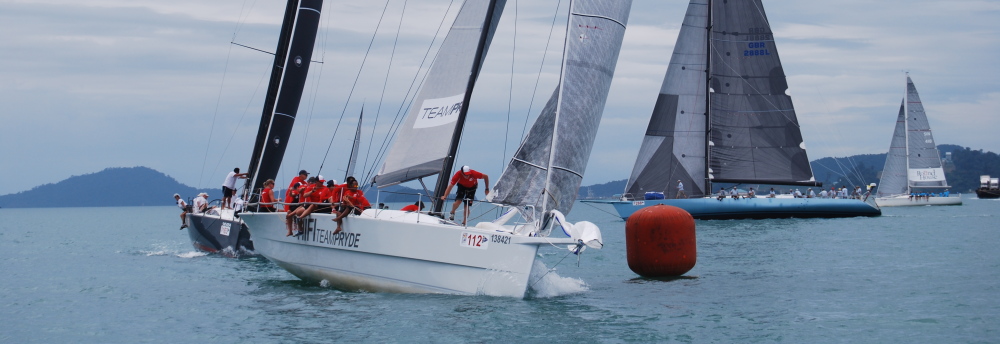
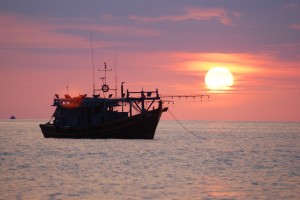
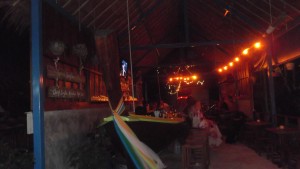
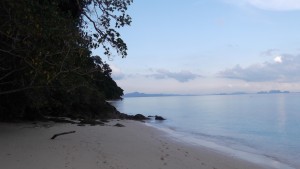
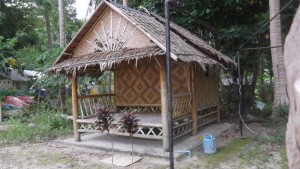
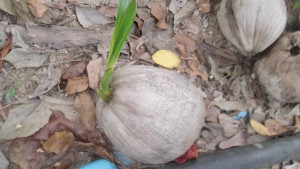
My word, what a journey!